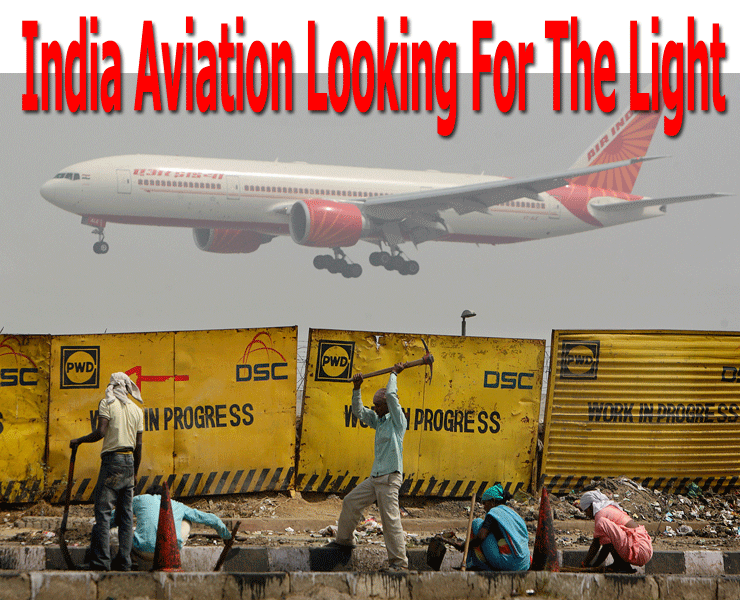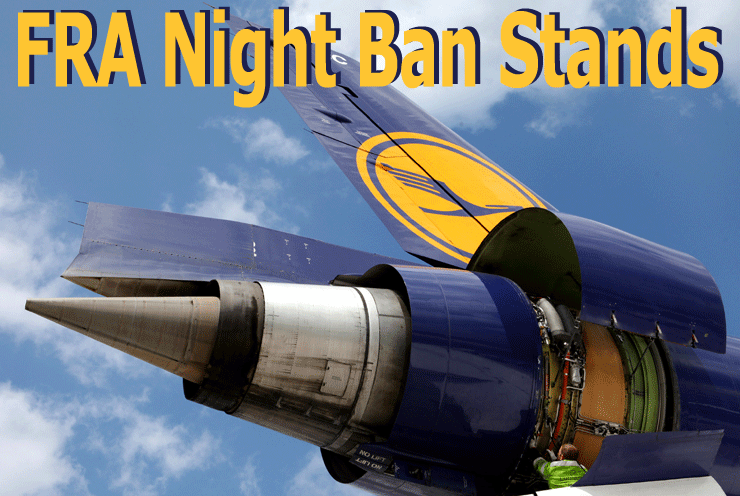
There might be gloom all around
the aviation circles in India, but the Federation of Indian
Chambers of Commerce and Industry (FICCI) has pointed out
that there is hope. In fact, in a recently released paper
it has gone a step further to mention that the country has
the potential of becoming a global aviation hub and the third
largest aviation market by 2020—but only if an 8-point
action agenda is pursued that includes closer collaboration
between the Ministry of Civil Aviation, other related ministries
(finance, home, defense, external affairs, commerce and industry,
tourism, environment, HRD, etc.), regulators (DGCA and AERA),
and the industry; reduction of tax on ATF; and implementation
of the policy decision of 49 percent Foreign Direct Investment
limit, etc.
Indian air cargo volumes are
woefully low. In 2011, all Indian airports handled the total
air cargo volume of 2.3 million. The figure is less than the
volumes handled by any of the international airports like
Hong Kong, Memphis, Shanghai, Incheon, Anchorage, and Paris.
Incidentally, the average weight load factor of air cargo
in the last five years was 62 percent, reflecting unused capacity.
To top it all, air cargo has not kept pace with other transport
modes like shipping: the five year CAGR of air-cargo at 11
percent is lower than the growth rate of the country’s
overall exports and imports, which grew by around 15 percent
and 18 percent over the same period.
The FICCI paper worked out in
conjunction with KPMG has shown that while cargo and passenger
traffic have shown strong growth and infrastructure has been
enhanced at both metro and non-metro airports, the country
stands at a crucial juncture—it can leap forward from
its position as a leading aviation market to a global aviation
hub, but only with some fundamental changes.
It is interesting to note that
the paper acknowledges the contribution of air cargo. This
realization that air cargo is important for the economy of
the country seems to have bypassed the country’s lawmakers
and planners. The contribution of air cargo, according to
the paper, needs to be adequately and appropriately focused
upon, so that the country’s fast growing international
and domestic trade by air is facilitated, enabled, integrated,
and expanded. While the volume of air cargo is just 1.5 percent
of the total trade, it constitutes almost 29 percent of the
total trade value.
While total freight traffic
handled by the airports of the country increased at a CAGR
of around 11 percent in the last five years, it is domestic
cargo that has grown at a faster pace of 11.6 percent. International
cargo has grown at a slower 10.3 percent. According to the
12th Five-Year Plan estimates, domestic and international
cargo will grow at the rate of 12 and 10 percent respectively
over the next five years. By 2017-18, while international
cargo could touch the 2.7 mmtpa mark, domestic cargo would
be around 1.7 mmtpa. In addition, considering India’s
geographic location, the tonnages of transshipment cargo—which
for many international airports is as high as 60 to 70 percent—is
small in the international airports in the country.
However, first the challenges
have to be overcome. Among these are high dwell times, congestion
at cargo terminals, missing and damaged cargo, manual processing,
etc. These obstacles can be overcome if infrastructure is
enhanced, procedures are simplified, and new technology is
introduced. The FICCI-KPMG paper suggests some quick-fix measures,
among them the establishment of an Air Cargo Promotion Board
(ACPB). The ACPB can help in the growth of the sector by enabling
policies and facilitating planned development of air cargo
hubs in the country. ACPB could comprise representatives from
relevant ministries, including finance, commerce, industry
and civil aviation and meet on a quarterly basis.
Other than the ACPB, the paper
suggests the development of an Air Cargo Vision 2020 along
with a time-bound implementation roadmap, the development
of air cargo hub airports to compete against those in West
Asia and South East Asia, establishment of Cargo Villages
at all hub airports and Air Freight Stations (AFS) in smaller
airports, formulation of the Quality of Service (QoS) parameters
for stakeholders in the air-cargo supply chain, and facilitation
of the expansion of freighter fleet in the country.
The paper also suggests the
need to promote professional training programs for air cargo
since there is an acute shortage of trained manpower in the
sector. To overcome the skills crisis in the air cargo sector,
the government could set up a world-class cargo training institute
in collaboration with the industry.
Perhaps the most important suggestion
is 24x7 customs operations. The move would not only push India
to compete with cargo hubs in the region but also facilitate
faster clearances, including processing of documents, assessment,
examination, and release of cargo.
Along with the FICCI-KPMG paper,
CAPA - Centre for Aviation and air transport IT specialist
SITA has also forecast that India will become the world’s
third largest aviation market by 2020. The growth can be achieved
with the right investment, infrastructure, and regulatory
systems. According to Kapil Kaul, CEO CAPA India:
“Technology today has
the potential to become far more pervasive and to transform
the operations of airlines, airports, service providers, and
border control. The aviation industry can leverage technology
not only to deliver functionality and cost efficiencies, but
also to drive enhanced passenger experiences, new commercial
revenue streams, and improved security. In this report we
set out to understand whether India's aviation industry is
positioned to grasp these opportunities, and to present a
roadmap for the future.”
T. Ghosh |






 In
response to FlyingTypers‘ questions,
Matthias Eberle (left), who took over the post of Director
of Communications for Lufthansa Cargo effective April
1 with an immediate and urgent call to duty, said: “The
legal situation is such that the Leipzig court decision
de facto puts the matter back into the hands of the
Hessian court. While no one expects a reversal in the
foreseeable future, it does provide Lufthansa with the
opportunity to formally be heard and voice its concerns
for the first time, something that was not the case
in the course of the initial procedures.”
In
response to FlyingTypers‘ questions,
Matthias Eberle (left), who took over the post of Director
of Communications for Lufthansa Cargo effective April
1 with an immediate and urgent call to duty, said: “The
legal situation is such that the Leipzig court decision
de facto puts the matter back into the hands of the
Hessian court. While no one expects a reversal in the
foreseeable future, it does provide Lufthansa with the
opportunity to formally be heard and voice its concerns
for the first time, something that was not the case
in the course of the initial procedures.”




